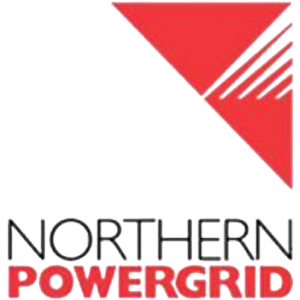- England
Distribution Future Energy Scenarios - DFES 2021
Northern Powergrid's electricity distribution network is key to achieving decarbonisation goals in the northeast of England, Yorkshire, and parts of Lincolnshire. We are therefore presenting our Distribution Future Energy Scenarios (DFES) using an open data approach. Your feedback will help us to plan our network for the future developments in our region and to deliver the services and infrastructure required to fulfil the ambitions and plans of our regional stakeholders.
Our Distribution Future Energy Scenarios (DFES) 2021 show our predictions under a Planning Scenario we developed in response to stakeholder feedback to represent our best view; and also four scenarios representing a regionalised interpretation of National Grid's GB Future Energy Scenarios, found here. The DFES data available below provides our forecasts down to primary substation level. We have provided a geo-spatial tool to help visualise these values both at a primary substation and local authority level. During the first quarter of 2022 we are seeking feedback on the forecasts presented. We will use your feedback to help inform our view of how we can best develop our network.
The parameters for which we are sharing our forecasts are fully explained in the DFES document downloadable below. The data itself can be downloaded on a local authority basis as well as for all of our primary electricity substations, major sites (bulk supply points), grid supply points and as an overall view for Northern Powergrid. Available data includes the following key DFES 2021 parameters but we will continue to load new parameters, as and when we find out that they are of interest to you:-
- Low carbon technologies :
- electric vehicles (number)
- heat pumps (number)
- domestic photovoltaic installed capacity (MW)
- Energy consumption :
- domestic underlying energy consumption (MWh)
- industrial and commercial underlying energy consumption (MWh)
- Total energy consumption including electric vehicles and heat pumps (MWh)
- Generation :
- Large solar generation installed capacity (MW)
- Wind generation installed capacity (MW)
- Other generation installed capacity (MW)
- Energy storage installed capacity (MW)
- Electricity network demand :
- Peak demand at Primary Substations (MW)
- Peak utilisation at Primary Substations (%)
This repository will be populated during February 2022, if you think something is missing during this period, please check back later before contacting us.
Northern Powergrid Metadata showing the Network Topology and the allocation of primary substations to the Local Authority Areas to which they distribute electricity. These splits form the basis of the Open Innovations Leeds DFES 2021 visualisation tool.
The Distribution Future Energy Scenarios 2021 (DFES 2021) document presenting high level results and signposting to the open data and the visualisation tool
All LA based DFES 2021 data - and all on one page (flat file format). Data is for each Local Authority in the Northern Powergrid region out to 2050 for each scenario and for Electric Vehicles, Heat Pumps, Generation, Storage, and electrical energy consumption. Filter on your chosen scenario, parameters and LA.
Generation and Storage includes large scale installations connected directly to the supply points within a local authority area.
A useful tool for selecting your local authority, scenario and parameter and charting the results. It also contains all the flat data issued in the LA flat data workbook (Electric Vehicles, Heat Pumps, Generation, Storage, and electrical energy consumption)
V3 - charts added that shows the potential range of values across all scenarios for each parameter
A useful tool for selecting your local authority and charting the Electric Vehicle data. It also shows charts for the minimum and maximum across all the local authorities in the Northern Powergrid region. Electric Vehicles are of all types - Pure electric and plug in hybrid, cars and light vans. More detailed breakdowns are available in the full local authority data workbook.
V2 - corrected colour representing NPg Planning Scenario
A useful tool for selecting your local authority and charting the Total Heat Pump data. It also shows charts for the minimum and maximum across all the local authorities in the Northern Powergrid region. Heat pumps are of all types - full electric and hybrid, domestic and industrial and commercial. More detailed breakdowns are available in the full local authority data workbook.
V2 - corrected colour representing NPg Planning Scenario
Data for each Local Authority in the Northern Powergrid region out to 2050 for Electric Vehicles, Heat Pumps, Generation, Storage, and electrical energy consumption.
New this year - the LA allocation now includes large generation and storage connected directly to supply points within local authority areas as well as the smaller generation and storage connected to primary substations.
This large spreadsheet contains the data for Northern Powergrid Primaries, out to 2050 for the core relevant DFES parameters. It includes peak demand and utilisation, Distributed Generation and Low Carbon Technologies like Electric Vehicles and Heat Pumps. It is a flat file with 52,346 rows which you can filter on your selected parameters and scenarios. CSV files are also available individually further down in the DFES 2021 dataset if you are only interested in one parameter or one scenario at a time.
This is the data for Northern Powergrid's bulk supply points out to 2050 for DFES 2021 core relevant parameters (Generation, Demand and LCTs). Note that the amount of distributed generation at supply points will be higher than the sum of that at the primaries fed from the supply point. This is because of directs connections that are made to the BSP which are in addition to those that are accumulated at the BSP level from the connections to the Primary Substations.
Grid Supply Point DFES 2021 Core Building Blocks - Update in 2022 to better reflect Srg_B0001 building block. Also some updates to generation based on assumptions about existing installations.
This takes you to the Github repository where you can view on screen the files behind the overview graphs (https://odileeds.github.io/northern-powergrid/2021-DFES/graphs.html).
They are most useful for people who have knowledge of Github and the use of Open Data.
As well as the csv files from which the graphs are built, graphics files in svg format can be obtained.
This takes you to the Github repository where you can view on screen and download the files behind the visualisation tool.
They are most useful for people who have knowledge of Github and the use of Open Data.


